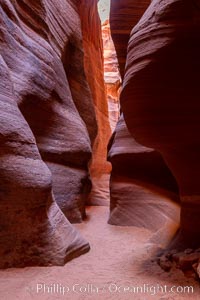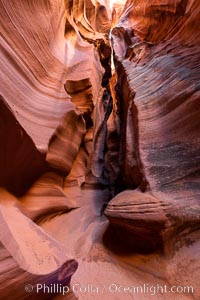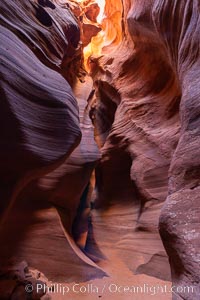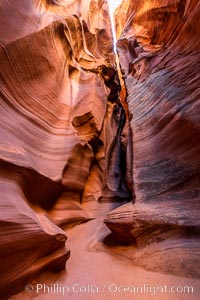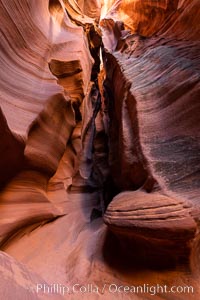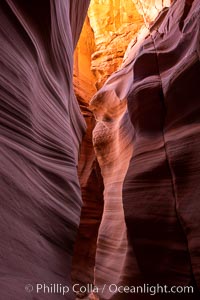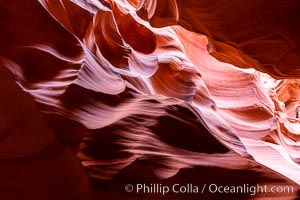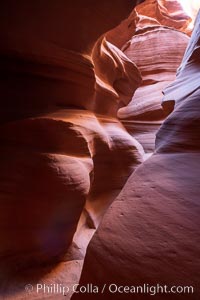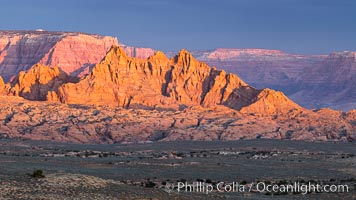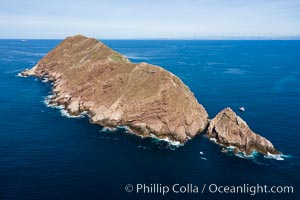
Aerial Photo of North Coronado Island, Baja California, Mexico, viewed from the southwest. The Keyhole, a spectacular narrow cut and underwater tunnel through the island, is seen at the narrow neck of the island. The San Diego and Tijuana coastline is visible in the distance.
Location: Coronado Islands (Islas Coronado), Baja California, Mexico
Image ID: 35896
Location: Coronado Islands (Islas Coronado), Baja California, Mexico
Image ID: 35896

Hyena carrying a jawbone, Mara Triangle, Kenya.
Species: Spotted hyena, Crocuta crocuta
Location: Mara North Conservancy, Kenya
Image ID: 39697
Species: Spotted hyena, Crocuta crocuta
Location: Mara North Conservancy, Kenya
Image ID: 39697

Hyena with Pieces of a Lion Kill, Greater Masai Mara, Kenya.
Species: Spotted hyena, Crocuta crocuta
Location: Mara North Conservancy, Kenya
Image ID: 39714
Species: Spotted hyena, Crocuta crocuta
Location: Mara North Conservancy, Kenya
Image ID: 39714

Northern pintail, male, Bosque Del Apache National Wildlife Refuge.
Species: Northern Pintail, Anas acuta
Location: Bosque del Apache National Wildlife Refuge, Socorro, New Mexico
Image ID: 39940
Species: Northern Pintail, Anas acuta
Location: Bosque del Apache National Wildlife Refuge, Socorro, New Mexico
Image ID: 39940
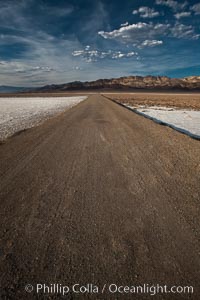
West Side Road cuts across the Badwater Basin.
Location: Badwater, Death Valley National Park, California
Image ID: 25261
Location: Badwater, Death Valley National Park, California
Image ID: 25261
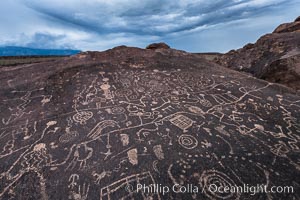
Sky Rock petroglyphs near Bishop, California. Hidden atop an enormous boulder in the Volcanic Tablelands lies Sky Rock, a set of petroglyphs that face the sky. These superb examples of native American petroglyph artwork are thought to be Paiute in origin, but little is known about them.
Location: Bishop, California
Image ID: 27000
Location: Bishop, California
Image ID: 27000
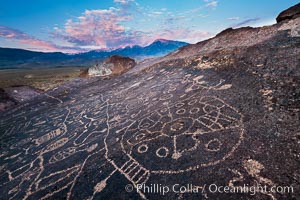
Sky Rock petroglyphs near Bishop, California. Hidden atop an enormous boulder in the Volcanic Tablelands lies Sky Rock, a set of petroglyphs that face the sky. These superb examples of native American petroglyph artwork are thought to be Paiute in origin, but little is known about them.
Location: Bishop, California
Image ID: 27006
Location: Bishop, California
Image ID: 27006
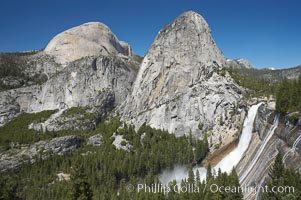
Nevada Falls, with Liberty Cap (center) and Half Dome (left). Nevada Falls marks where the Merced River plummets almost 600 feet through a joint in the Little Yosemite Valley, shooting out from a sheer granite cliff and then down to a boulder pile far below.
Location: Nevada Falls, Yosemite National Park, California
Image ID: 16115
Location: Nevada Falls, Yosemite National Park, California
Image ID: 16115
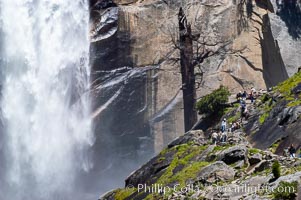
Hikers climb the Mist Trail (at right) through Little Yosemite Valley, approaching Vernal Falls. Spring.
Location: Vernal Falls, Yosemite National Park, California
Image ID: 09200
Location: Vernal Falls, Yosemite National Park, California
Image ID: 09200
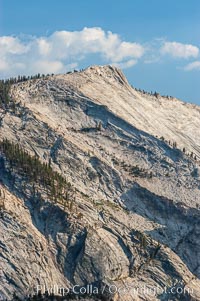
Clouds Rest viewed from Olmsted Point. Clouds Rest is one of the most massive -- if not the singlemost massive -- granite monoliths in the world. A vast lobe of Mesozoic-era granodiorite magma cooled to rock and was gradually uplifted to its present altitude of 9926 ft. Later, glaciers cut it into its present shape.
Location: Yosemite National Park, California
Image ID: 09965
Location: Yosemite National Park, California
Image ID: 09965
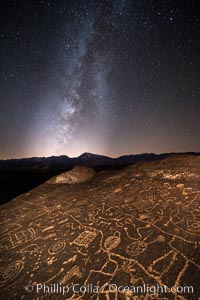
The Milky Way at Night over Sky Rock. Sky Rock petroglyphs near Bishop, California. Hidden atop an enormous boulder in the Volcanic Tablelands lies Sky Rock, a set of petroglyphs that face the sky. These superb examples of native American petroglyph artwork are thought to be Paiute in origin, but little is known about them.
Location: Bishop, California
Image ID: 28798
Location: Bishop, California
Image ID: 28798
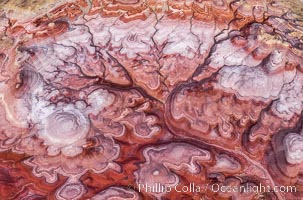
The Tree of Eons, Utah. The Tree of Eons is a spectacular geologic sight near the San Rafael Swell in Utah. Here the Tree of Eons is seen under the direct light of midday. Erosion has cut a dendritic "tree" through red, blue, purple and white layers of the Chinle formation. The Tree of Eons is a superb example of dendritic erosion and, to really appreciate its complex fractal-like details, must be observed from above.
Location: Utah
Image ID: 38201
Location: Utah
Image ID: 38201
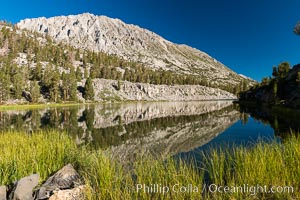
Panorama of Box Lake, morning, Little Lakes Valley, John Muir Wilderness, Inyo National Forest.
Location: Little Lakes Valley, Inyo National Forest, California
Image ID: 31177
Location: Little Lakes Valley, Inyo National Forest, California
Image ID: 31177
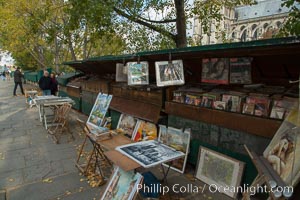
Art Seller along La Rive Gauche, the Left Bank, Paris. La Rive Gauch, the Left Bank, is the southern bank of the river Seine in Paris. Here the river flows roughly westward, cutting the city in two: looking downstream, the southern bank is to the left, and the northern bank (or Rive Droite) is to the right.
Location: La Rive Gauche, Paris, France
Image ID: 28146
Location: La Rive Gauche, Paris, France
Image ID: 28146
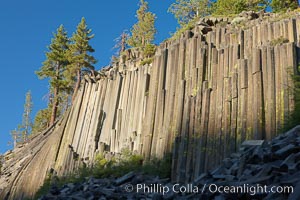
Devil's Postpile, a spectacular example of columnar basalt. Once molten and under great pressure underground, the lava that makes up Devil's Postpile cooled evenly and slowly, contracting and fracturing into polygonal-sided columns. The age of the formation is estimated between 100 and 700 thousand years old. Sometime after the basalt columns formed, a glacier passed over the formation, cutting and polishing the tops of the columns. The columns have from three to seven sides, varying because of differences in how quickly portions of the lava cooled.
Location: Devils Postpile National Monument, California
Image ID: 23266
Location: Devils Postpile National Monument, California
Image ID: 23266
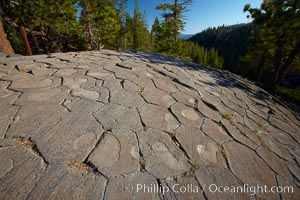
Devil's Postpile, a spectacular example of columnar basalt. Once molten and under great pressure underground, the lava that makes up Devil's Postpile cooled evenly and slowly, contracting and fracturing into polygonal-sided columns. The age of the formation is estimated between 100 and 700 thousand years old. Sometime after the basalt columns formed, a glacier passed over the formation, cutting and polishing the tops of the columns. The columns have from three to seven sides, varying because of differences in how quickly portions of the lava cooled.
Location: Devils Postpile National Monument, California
Image ID: 23267
Location: Devils Postpile National Monument, California
Image ID: 23267
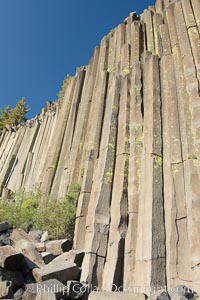
Devil's Postpile, a spectacular example of columnar basalt. Once molten and under great pressure underground, the lava that makes up Devil's Postpile cooled evenly and slowly, contracting and fracturing into polygonal-sided columns. The age of the formation is estimated between 100 and 700 thousand years old. Sometime after the basalt columns formed, a glacier passed over the formation, cutting and polishing the tops of the columns. The columns have from three to seven sides, varying because of differences in how quickly portions of the lava cooled.
Location: Devils Postpile National Monument, California
Image ID: 23285
Location: Devils Postpile National Monument, California
Image ID: 23285
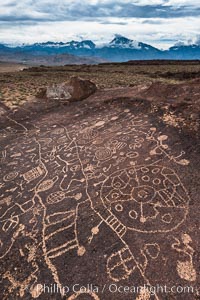
Sky Rock petroglyphs and storm clouds over the Eastern Sierran Nevada, near Bishop, California. Hidden atop an enormous boulder in the Volcanic Tablelands lies Sky Rock, a set of petroglyphs that face the sky. These superb examples of native American petroglyph artwork are thought to be Paiute in origin, but little is known about them.
Location: Bishop, California
Image ID: 27001
Location: Bishop, California
Image ID: 27001
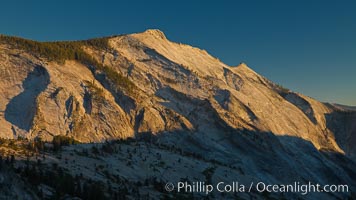
Cloud's Rest at sunset, viewed from Olmsted Point. Clouds Rest is one of the most massive -- if not the singlemost massive -- granite monoliths in the world. A vast lobe of Mesozoic-era granodiorite magma cooled to rock and was gradually uplifted to its present altitude of 9926 ft. Later, glaciers cut it into its present shape.
Location: Yosemite National Park, California
Image ID: 25761
Location: Yosemite National Park, California
Image ID: 25761
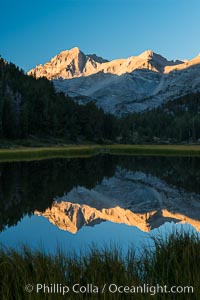
Bear Creek Spire over Marsh Lake at Sunrise, Little Lakes Valley, John Muir Wilderness, Inyo National Forest.
Location: Little Lakes Valley, Inyo National Forest, California
Image ID: 31167
Location: Little Lakes Valley, Inyo National Forest, California
Image ID: 31167
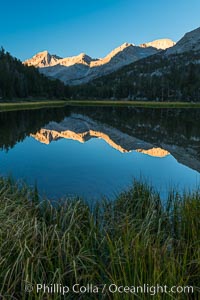
Bear Creek Spire over Marsh Lake at Sunrise, Little Lakes Valley, John Muir Wilderness, Inyo National Forest.
Location: Little Lakes Valley, Inyo National Forest, California
Image ID: 31168
Location: Little Lakes Valley, Inyo National Forest, California
Image ID: 31168
